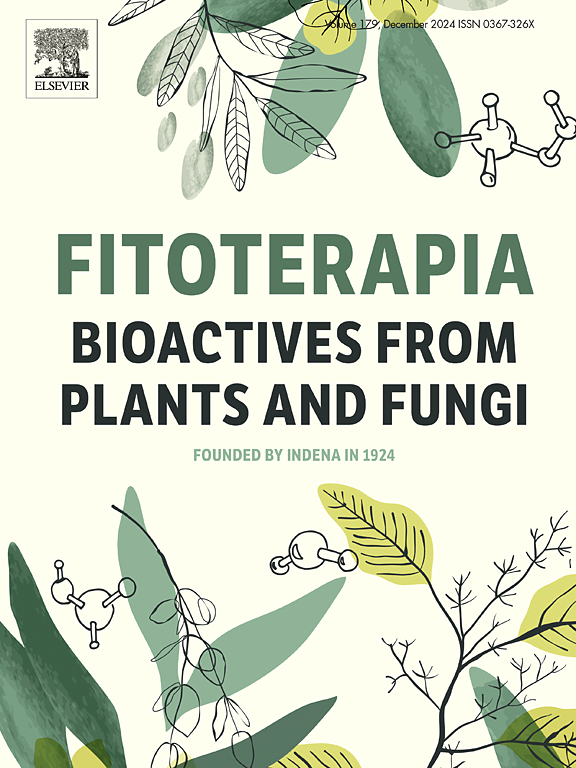Anti-colorectal cancer bioactive metabolites from endophytic fungi of Pyrola spp. targeting p-ATM/P53 pathway driven by in vitro experiments and network pharmacology
IF 2.6
3区 医学
Q3 CHEMISTRY, MEDICINAL
引用次数: 0
Abstract
Employing the OSMAC (One Strain Many Compounds) strategy, a systematic investigation was conducted on secondary metabolites produced by the co-culture of endophytic fungi Penicillium soppii and Penicillium solitum isolated from Pyrola spp., leading to the isolation of ten compounds from their fermented products. Asperphenamate (5) amid all the compounds exhibited stronger anti-colorectal cancer (CRC) activity against HCT-8 cells than the positive control 5-fluorouracil (P < 0.05), significantly reducing the migration rate of HCT-8 cells in a wound healing assay, increasing the percentage of apoptotic cells from 28.13 ± 0.85 % to 45.58 ± 2.01 % as determined by live/dead cell staining assay, and blocking cell cycle progression from G1 to S phase analyzed by flow cytometry. Asperphenamate (5) may induce apoptosis or cell cycle arrest by activating the DNA damage response (DDR) as evidenced by significant enrichment of DDR-associated signaling pathways and strong binding affinity to key DDR-related proteins through network pharmacology and docking analyses. Furthermore, Asperphenamate (5) increased the expression of p53 and phosphorylated ATM (p-ATM) proteins and decreased CDK2 levels in a concentration-dependent manner, indicating it may be mediated by regulation of the ATM/p53/CDK2 signaling axis, resulting in cell cycle arrest or apoptosis. Collectively, these findings established Asperphenamate (5) as a viable lead compound for CRC therapy and underscored Penicillium spp. as a prolific source of bioactive natural products with medicinal properties.

以p-ATM/P53通路为靶点的热蹄草内生真菌抗大肠癌生物活性代谢物体外实验及网络药理学研究
采用OSMAC (One Strain Many Compounds)策略,对产自软蹄草的内生真菌青霉菌(Penicillium soppii)和单株青霉菌(Penicillium solitum)共培养产生的次生代谢物进行了系统的研究,从它们的发酵产物中分离出10种化合物。在所有化合物中,阿斯吡酯(5)对HCT-8细胞的抗结直肠癌(CRC)活性强于阳性对照5-氟尿嘧啶(P
本文章由计算机程序翻译,如有差异,请以英文原文为准。
求助全文
约1分钟内获得全文
求助全文
来源期刊

Fitoterapia
医学-药学
CiteScore
5.80
自引率
2.90%
发文量
198
审稿时长
1.5 months
期刊介绍:
Fitoterapia is a Journal dedicated to medicinal plants and to bioactive natural products of plant origin. It publishes original contributions in seven major areas:
1. Characterization of active ingredients of medicinal plants
2. Development of standardization method for bioactive plant extracts and natural products
3. Identification of bioactivity in plant extracts
4. Identification of targets and mechanism of activity of plant extracts
5. Production and genomic characterization of medicinal plants biomass
6. Chemistry and biochemistry of bioactive natural products of plant origin
7. Critical reviews of the historical, clinical and legal status of medicinal plants, and accounts on topical issues.
 求助内容:
求助内容: 应助结果提醒方式:
应助结果提醒方式:


